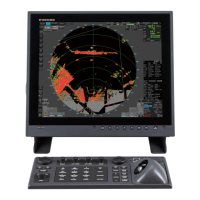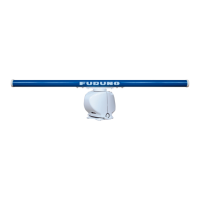Do you have a question about the Furuno FAR-3320-NXT and is the answer not in the manual?
Describes how to set up the chart radar after installation and back up configuration data.
Lists required items for setup, including PC and LAN cable.
Mentions Microsoft Corporation's Windows trademark.
Explains how to use silent mode to deactivate audio alarms.
Details methods to access the Common Installation Setting menu via PC or control unit.
Provides steps for accessing settings using a laptop via LAN connection.
Covers the initial configuration options within the Basic Setting menu.
Details the configuration of Equipment ID, radar sensor, and system settings in the Basic Setting window.
Explains how to configure connected monitors, printers, and service gateways.
Outlines the settings for connecting and configuring the Voyage Data Recorder (VDR).
Guides on entering ship parameters like vessel type, dimensions, and sensor positions.
Explains how to set sensor data input and system configuration.
Details how to configure sensor data types, SFID, and connectivity details.
Covers the configuration of processor units like Chart Radar and ECDIS.
Covers setting alert groups and defining alert conditions for the system.
Covers how to set up and activate alert definitions for individual equipment.
Explains how to confirm configuration consistency, save, and sync data.
Details the process of checking data consistency and saving it to the system.
Guides on updating the software for processor units, antenna units, and control units.
Covers performing factory tests and restoring system default settings.
Explains how to configure the layout and data displayed on the conning display.
Guides on setting the individual Equipment ID for a sensor adapter before network connection.
Details the procedure for updating the firmware of the MC-3000S sensor adapter.
Provides detailed instructions for updating the sensor adapter's firmware via FTP.
Lists the necessary hardware and software for setting up the IGMP querier.
Outlines the steps to configure the HUB-3000 IGMP querier using Tera Term.
Describes how to set up the chart radar after installation and back up configuration data.
Lists required items for setup, including PC and LAN cable.
Mentions Microsoft Corporation's Windows trademark.
Explains how to use silent mode to deactivate audio alarms.
Details methods to access the Common Installation Setting menu via PC or control unit.
Provides steps for accessing settings using a laptop via LAN connection.
Covers the initial configuration options within the Basic Setting menu.
Details the configuration of Equipment ID, radar sensor, and system settings in the Basic Setting window.
Explains how to configure connected monitors, printers, and service gateways.
Outlines the settings for connecting and configuring the Voyage Data Recorder (VDR).
Guides on entering ship parameters like vessel type, dimensions, and sensor positions.
Explains how to set sensor data input and system configuration.
Details how to configure sensor data types, SFID, and connectivity details.
Covers the configuration of processor units like Chart Radar and ECDIS.
Covers setting alert groups and defining alert conditions for the system.
Covers how to set up and activate alert definitions for individual equipment.
Explains how to confirm configuration consistency, save, and sync data.
Details the process of checking data consistency and saving it to the system.
Guides on updating the software for processor units, antenna units, and control units.
Covers performing factory tests and restoring system default settings.
Explains how to configure the layout and data displayed on the conning display.
Guides on setting the individual Equipment ID for a sensor adapter before network connection.
Details the procedure for updating the firmware of the MC-3000S sensor adapter.
Provides detailed instructions for updating the sensor adapter's firmware via FTP.
Lists the necessary hardware and software for setting up the IGMP querier.
Outlines the steps to configure the HUB-3000 IGMP querier using Tera Term.
| Brand | Furuno |
|---|---|
| Model | FAR-3320-NXT |
| Category | Marine Radar |
| Language | English |












